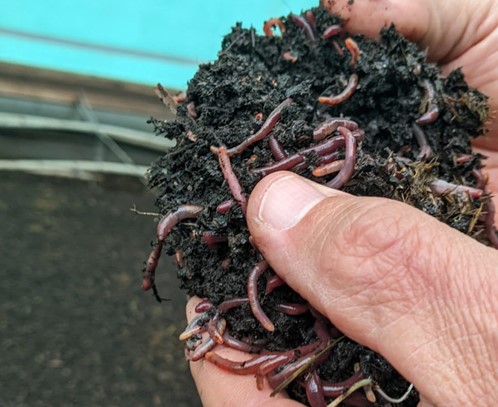The Best Guide To Red Wiggler Express
The Best Guide To Red Wiggler Express
Blog Article
6 Simple Techniques For Red Wiggler Express
Table of ContentsRed Wiggler Express Fundamentals ExplainedThe 7-Minute Rule for Red Wiggler ExpressHow Red Wiggler Express can Save You Time, Stress, and Money.The Definitive Guide for Red Wiggler ExpressThe 20-Second Trick For Red Wiggler Express

If you're at all in song to the agricultural information of late, you're well conscious that dirt health and wellness is in decrease all over the world a problem that is having a devastating effect on our food systems. The answer to this worldwide trouble? Worms.
Some start vermicomposting as a hobby and scale up, whereas others have the purpose right from the start to produce a profit-making service. They might be farmers, community garden volunteers, entrepreneurs, landscapers, greenhouse farmers, or team at establishments that generate food waste.
Not known Factual Statements About Red Wiggler Express
One of the most common reasons for venturing into commercial vermicomposting is the need to reuse organic waste into products that boost dirt and plant wellness. Dirt wellness has recently become an essential international concern. The United Nations Food and Farming Company stated 2015 the International Year of Soils to increase recognition of soil's role in food safety and healthy community feature.

In the interior of a land fill, organic materials break down in an anaerobic atmosphere and release methane, a greenhouse gas that is 25 times more powerful than carbon dioxide (Organic). A much better alternative to landfilling food waste and various other natural materials is to vermicompost them. What was once taken into consideration waste can be changed right into important products that nourish soils and plants
Red Wiggler Express for Beginners
For the previous 25 years in lots of papers, book phases, and interviews, I have described the completed product of vermicomposting as vermicompost. This term is frequently made use of to recognize the mix of earthworm castings (feces) and leftover bedding and feedstock (natural material) that is collected from worm beds.
After significant thought, I determined to use the term vermicast throughout this publication, for two vital reasons. One is because lots of people use the terms garden compost and vermicompost interchangeably, not understanding that completion product of vermicomposting is qualitatively various from compost. I believe it would certainly benefit the vermicomposting sector to distance itself from the term compost in referring to its items.
Composting is the controlled process of transforming organic products right into a useful dirt change under cardio conditions utilizing biologically produced warmth. On the other hand, a vermicomposting heap or worm bin ought to be kept so that it does not warm up. In a compost stack the kinds and amounts of species of bacteria transform when the heap reaches thermophilic temperatures of 106F (41C) or greater.
Red Wiggler Express - An Overview
The lower line marking the distinction between compost and vermicast, however, (https://fliphtml5.com/homepage/gvkks) is that the last has actually gone through earthworms. Hence, vermicomposting is a lot more similar to livestock production than to composting; it needs animal husbandry skills to appropriately take care of the worms. A second reason to make use of the term vermicast is to prevent item labeling that can be confusing to customers.
Worm spreading is the final item of worm food digestion and can be just known as worm manure. It is abundant in organic matter and beneficial microbes that create and aid your yard.
Lasting gardening is exercised when no-cost or affordable amendments such as the usage of worm spreading from vermicomposting is incorporated. Accumulated organic issue in vermicompost bins. Picture by Maggie Chen. Worms play this indispensable function in the vermicomposting process and also in minimizing the impacts of climate modification. Garbage dump gas (LFG) is discharged as a natural byproduct of organic material disintegration, such as food waste breaking down in land fills.
In the previous two a century after the Industrial Revolution, methane concentrations within the environment have greater than doubled due in huge part to anthropogenic human-related activities (Vermicompost). Around 50 percent of LFG launched from landfills is carbon dioxide and the remainder is a tiny percentage of non-methane natural compounds. Methane is a powerful greenhouse gas that remains in the environment for a much shorter time in comparison to co2 yet both are released in the environment in huge quantities from varying sources one of which is natural product disintegration from landfills
Examine This Report on Red Wiggler Express

Exists a food waste or vermicomposting system on your regional university? It is seen that long lasting and impactful activities on a system wide range can start with a solitary Your Domain Name small worm. Worms might be traditionally linked with this gory and spooky period, but when thinking about the interconnected impact of the vermicomposting process (on boosting soil health and plant development in your garden, alleviate environment adjustment, and equipping students) provide some appreciation to the abundant advantages that worms give.
Report this page